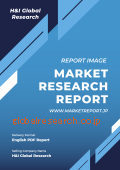Chapter 1. Executive Summary
1.1. Market Snapshot
1.2. Global & Segmental Market Estimates & Forecasts, 2020-2030 (USD Billion)
1.2.1. Anticancer monoclonal antibodies Market, by Region, 2020-2030 (USD Billion)
1.2.2. Anticancer monoclonal antibodies Market, by Type, 2020-2030 (USD Billion)
1.2.3. Anticancer monoclonal antibodies Market, by Application, 2020-2030 (USD Billion)
1.2.4. Anticancer monoclonal antibodies Market, by End User, 2020-2030 (USD Billion)
1.3. Key Trends
1.4. Estimation Methodology
1.5. Research Assumption
Chapter 2. Global Anticancer monoclonal antibodies Market Definition and Scope
2.1. Objective of the Study
2.2. Market Definition & Scope
2.2.1. Industry Evolution
2.2.2. Scope of the Study
2.3. Years Considered for the Study
2.4. Currency Conversion Rates
Chapter 3. Global Anticancer monoclonal antibodies Market Dynamics
3.1. Anticancer monoclonal antibodies Market Impact Analysis (2020-2030)
3.1.1. Market Drivers
3.1.1.1. Increase in prevalence of cancer
3.1.1.2. Increase in growth of Pharmaceutical Industry
3.1.2. Market Challenges
3.1.2.1. High cost of treatment
3.1.2.2. Side Effects and Safety Concerns
3.1.3. Market Opportunities
3.1.3.1. Development of Novel Targets
3.1.3.2. Integration of anti-cancer MAbs with other immunotherapies
Chapter 4. Global Anticancer monoclonal antibodies Market Industry Analysis
4.1. Porter’s 5 Force Model
4.1.1. Bargaining Power of Suppliers
4.1.2. Bargaining Power of Buyers
4.1.3. Threat of New Entrants
4.1.4. Threat of Substitutes
4.1.5. Competitive Rivalry
4.2. Porter’s 5 Force Impact Analysis
4.3. PEST Analysis
4.3.1. Political
4.3.2. Economical
4.3.3. Social
4.3.4. Technological
4.3.5. Environmental
4.3.6. Legal
4.4. Top investment opportunity
4.5. Top winning strategies
4.6. COVID-19 Impact Analysis
4.7. Disruptive Trends
4.8. Industry Expert Perspective
4.9. Analyst Recommendation & Conclusion
Chapter 5. Global Anticancer monoclonal antibodies Market, by Type
5.1. Market Snapshot
5.2. Global Anticancer monoclonal antibodies Market by Type, Performance – Potential Analysis
5.3. Global Anticancer monoclonal antibodies Market Estimates & Forecasts by Type 2020-2030 (USD Billion)
5.4. Anticancer monoclonal antibodies Market, Sub Segment Analysis
5.4.1. Murine Antibodies
5.4.2. Chimeric Antibodies
5.4.3. Humanized Antibodies
5.4.4. Other Types
Chapter 6. Global Anticancer monoclonal antibodies Market, by Application
6.1. Market Snapshot
6.2. Global Anticancer monoclonal antibodies Market by Application, Performance – Potential Analysis
6.3. Global Anticancer monoclonal antibodies Market Estimates & Forecasts by Application 2020-2030 (USD Billion)
6.4. Anticancer monoclonal antibodies Market, Sub Segment Analysis
6.4.1. Blood Cancer
6.4.2. Breast Cancer
6.4.3. Lung Cancer
6.4.4. Melanoma
6.4.5. Colorectal Cancer
6.4.6. Liver Cancer
6.4.7. Other Applications
Chapter 7. Global Anticancer monoclonal antibodies Market, by End User
7.1. Market Snapshot
7.2. Global Anticancer monoclonal antibodies Market by End User, Performance – Potential Analysis
7.3. Global Anticancer monoclonal antibodies Market Estimates & Forecasts by End User 2020-2030 (USD Billion)
7.4. Anticancer monoclonal antibodies Market, Sub Segment Analysis
7.4.1. Hospitals
7.4.2. Research Institutes
7.4.3. Other End Users
Chapter 8. Global Anticancer monoclonal antibodies Market, Regional Analysis
8.1. Top Leading Countries
8.2. Top Emerging Countries
8.3. Anticancer monoclonal antibodies Market, Regional Market Snapshot
8.4. North America Anticancer monoclonal antibodies Market
8.4.1. U.S. Anticancer monoclonal antibodies Market
8.4.1.1. Type breakdown estimates & forecasts, 2020-2030
8.4.1.2. Application breakdown estimates & forecasts, 2020-2030
8.4.1.3. End User breakdown estimates & forecasts, 2020-2030
8.4.2. Canada Anticancer monoclonal antibodies Market
8.5. Europe Anticancer monoclonal antibodies Market Snapshot
8.5.1. U.K. Anticancer monoclonal antibodies Market
8.5.2. Germany Anticancer monoclonal antibodies Market
8.5.3. France Anticancer monoclonal antibodies Market
8.5.4. Spain Anticancer monoclonal antibodies Market
8.5.5. Italy Anticancer monoclonal antibodies Market
8.5.6. Rest of Europe Anticancer monoclonal antibodies Market
8.6. Asia-Pacific Anticancer monoclonal antibodies Market Snapshot
8.6.1. China Anticancer monoclonal antibodies Market
8.6.2. India Anticancer monoclonal antibodies Market
8.6.3. Japan Anticancer monoclonal antibodies Market
8.6.4. Australia Anticancer monoclonal antibodies Market
8.6.5. South Korea Anticancer monoclonal antibodies Market
8.6.6. Rest of Asia Pacific Anticancer monoclonal antibodies Market
8.7. Latin America Anticancer monoclonal antibodies Market Snapshot
8.7.1. Brazil Anticancer monoclonal antibodies Market
8.7.2. Mexico Anticancer monoclonal antibodies Market
8.8. Middle East & Africa Anticancer monoclonal antibodies Market
8.8.1. Saudi Arabia Anticancer monoclonal antibodies Market
8.8.2. South Africa Anticancer monoclonal antibodies Market
8.8.3. Rest of Middle East & Africa Anticancer monoclonal antibodies Market
Chapter 9. Competitive Intelligence
9.1. Key Company SWOT Analysis
9.1.1. Company 1
9.1.2. Company 2
9.1.3. Company 3
9.2. Top Market Strategies
9.3. Company Profiles
9.3.1. Amgen Inc.
9.3.1.1. Key Information
9.3.1.2. Overview
9.3.1.3. Financial (Subject to Data Availability)
9.3.1.4. Product Summary
9.3.1.5. Recent Developments
9.3.2. Bristol Myers Squibb Company
9.3.3. Eli Lilly and Company
9.3.4. F. Hoffmann-La Roche Ltd.
9.3.5. Genmab AS
9.3.6. Novartis AG
9.3.7. Merck & Co., Inc.
9.3.8. GlaxoSmithKline plc
9.3.9. Johnson & Johnson Corp.
9.3.10. AbbVie, Inc
Chapter 10. Research Process
10.1. Research Process
10.1.1. Data Mining
10.1.2. Analysis
10.1.3. Market Estimation
10.1.4. Validation
10.1.5. Publishing
10.2. Research Attributes
10.3. Research Assumption
*** 免責事項 ***
https://www.globalresearch.co.jp/disclaimer/











